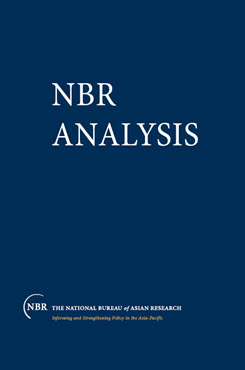The ASEAN Regional Forum Views the Councils for Security Cooperation in the Asia Pacific
How Track II Assists Track I
As a non-government advisory group, CSCAP enhances the intergovernmental ties between ARF states and augments the diplomatic resources available to ARF. Yet it is not clear the extent to which ARF member states are able to reconcile consensus-based decision-making and the doctrine of noninterference with the region’s changing strategic, economic, and political environment.
The development of a limited Asian security community based upon the political framework of ASEAN dates from the end of the Cold War. With the Asian Regional Forum (ARF) and the subsequent creation of Councils for Security Cooperation in the Asia Pacific (CSCAP), two fora now exist to further security transparency, build confidence, and address such common regional problems as drug and arms trafficking, communal violence, and maritime piracy. Both organizations, however, have focused on reassurance and transparency at the expense of preventive diplomacy and the real gains resulting from transnational cooperation. As a non–governmental advisory group, CSCAP enhances the intergovernmental ties between ARF states and augments the diplomatic resources available to ARF. Yet it is not clear the extent to which ARF member states are able to reconcile consensus–based decision– making and the doctrine of noninterference with the region’s changing strategic, economic, and political environment.
Multilateral security organizations abound in international politics. They range from the highly institutionalized with political and military structures on one extreme (NATO) to those with important political authority but no military capabilities (the UN Security Council) to those whose role is confined to discussing mutual security concerns without necessarily resolving them (the ASEAN Regional Forum). NATO and the UN Security Council are examples of security organizations designed to respond directly to security threats—the former to its members, the latter to global peace. They have the authority to invoke the use of force. The ASEAN Regional Forum (ARF) is a different creature entirely. Neither an alliance such as NATO nor a collective security body such as the UN Security Council, the ARF may best be described as an elaborate exercise in confidence building among states that must get along to prosper but that have a history of mutual suspicion and, in some cases, hostilities. [1]
The ARF emerged from ASEAN in the 1990s. The end of the Cold War left the Asia Pacific searching for a new organizing principle for security. [2] While traditional alliances remained, including bilateral treaties with the United States and the Five Power Defense Arrangement— a multilateral agreement among Great Britain, Australia, New Zealand, Malaysia, and Singapore—these seemed inadequate to deal with security matters of a nonmilitary nature such as transnational crime, environmental hazards, and illegal population movements. [3] Moreover, “traditional” security issues persisted in the form of unresolved territorial disputes, divided states, nuclear weapons proliferation, and conflicting maritime jurisdictions resulting from…
[1] While a number of articles and books have been written about the ARF and its annual meetings well documented, the classic study of the Forum’s structure, successes, and failures remains Michael Leifer’s The ASEAN Regional Forum: Extending ASEAN’s Model of Regional Security (London: International Institute of Strategic Studies, 1996).
[2] Maria Consuelo C. Ortuoste, “The Establishment of the ASEAN Regional Forum,” paper presented to the Multilateral Institutions in Asia Seminar, Asia-Pacific Center for Security Studies, Honolulu, July 14, 2000.
[3] This new security agenda is explored in Sheldon W. Simon, ed., The Many Faces of Asian Security, Lanham, MD: Rowman & Littlefield, 2001.


